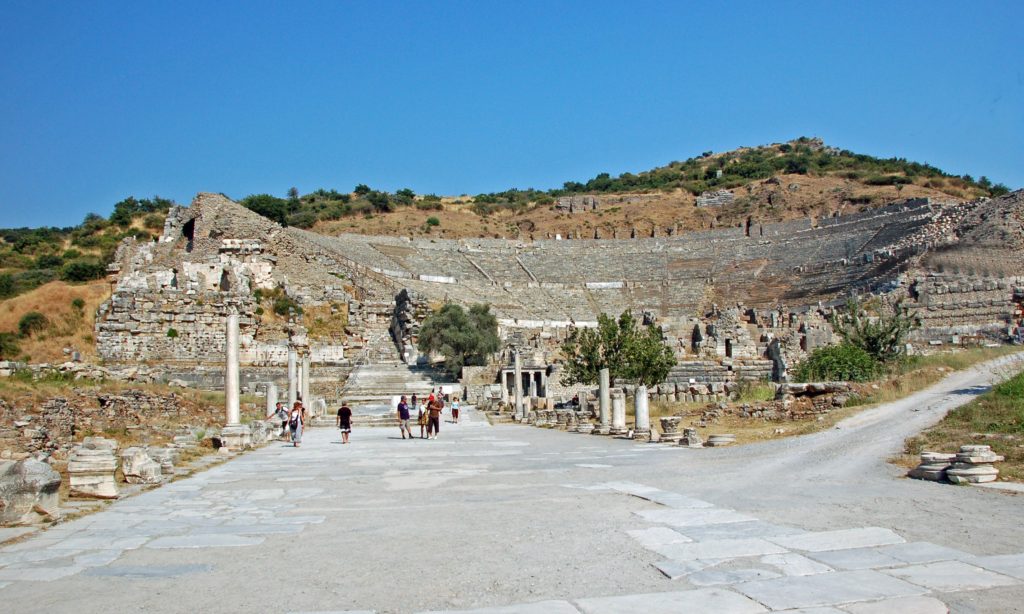
A dramatic confrontation reported in the New Testament occurred inside a Roman theatre in Ephesus. That colossal theatre is still in service today.
Ephesus, on the west coast of what is now Turkey, was founded by Greek colonists from across the Aegean Sea in the tenth century B.C. By the third century B.C., the city was famous for the nearby temple of Artemis, an important fertility goddess. Featuring 127 ionic columns and covering 1.6 acres, the temple was one of the Seven Wonders of the Ancient World. When the Romans took control of Ephesus in the first century B.C., they made it the capital of the Province of Asia. They reassociated the temple with their goddess Diana and greatly expanded a Greek theatre built into a hillside on the north side of the city, creating a seating capacity of 25,000. By the first century A.D., the population of Ephesus was as high as 250,000.
According to the Book of Acts, Paul went to Ephesus in about 54 A.D. Local silversmiths selling miniature representations of the temple complained that Paul’s teachings about Jesus were endangering their livelihoods by suggesting that Artemis/Diana was not a real god. Residents responded by dragging Paul’s traveling companions into the Great Theatre, where a shouting mob menaced them. The melee ended and the men were released when the city clerk demanded that the silversmiths pursue their grievances in court, warning that they could be charged with provoking a riot. By the time Paul left Ephesus in 56 A.D., the city was home to an important early church.
Christian vigilantes destroyed the temple of Artemis/Diana in 401 A.D. after Roman Emperor Theodosius I had outlawed paganism. But the Great Theatre, with its three-story stage house, has survived and is occasionally used for performances, including one by Elton John in 2001.